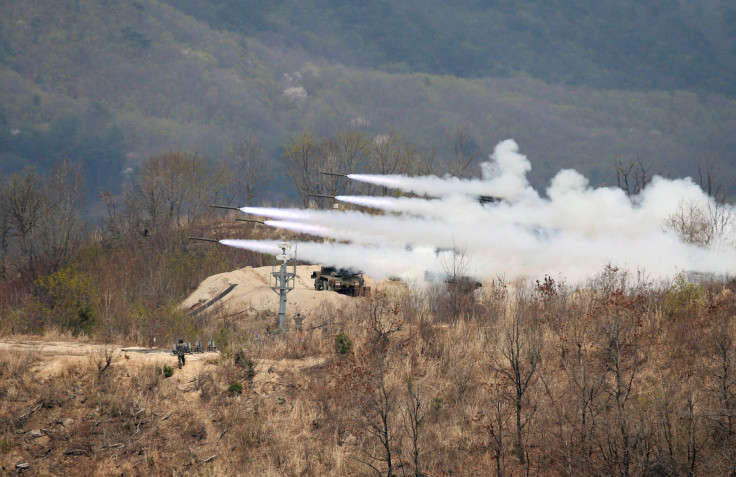US Long-Range Strategic Bombers To Train Over Korean Peninsula Despite Warnings From North Korea

Two U.S. long-range strategic bombers will train with South Korean fighter jets over the Korean peninsula later Tuesday as part of their combined drills despite warnings from North Korea, Yonhap News reported. North Korean leader Kim Jong Un's regime claims the country's nuclear advancements is in retaliation to the U.S.-South Korea drills.
Washington believes the joint military drills with Seoul are important to safeguard against any North Korean threat, which has increased over the last few months with Pyongyang's continued ballistic missile tests. North Korea conducted the tests despite strict sanctions and warnings from the United Nations and other countries around the world.
Read: North Korean Nuclear Program Talks? Secret Negotiations Happening With The US — Report
"Our Air Force plans to hold a joint drill with two B-1Bs in the sky of the Korean Peninsula today," Lt. Col. Kim Sung-duk, a public relations officer of the South Korean Air Force, told reporters, adding the B-1B Lancers are scheduled to fly over Korea for a few hours along with two F-15K fighter jets.
While talking about the latest drill, Kim Sung-duk pointed out the allies regularly conducted such joint air training. The bombers, a key strategic asset of the U.S. forces in the Asia-Pacific region, will carry out mock bombing practice at the Pilsung Range in the eastern province of Gangwon, a source told Yonhap News.
The latest bombers training comes as reports surfaced of the death of Otto Warmbier, the U.S. student released in a comatose state from a North Korean prison last week after spending around 17 months in captivity for stealing a propaganda banner.
The B-1B's flight training also follows controversial remarks by Moon Chung-in, a special adviser to South Korean President Moon Jae-in on unification, security and foreign affairs who said Seoul may decrease the deployment of U.S. strategic assets in the region and the number of the allies' combined military drills if North Korea frozes its nuclear and missile development.
The U.S. sent B-1B bombers to the Korean Peninsula on May 29, hours after North Korea test-fired a ballistic missile.
Amid growing nuclear threats from North Korea, a South Korean defense official said over the weekend that Seoul is expected to start mass production of new mid-range hit-to-kill missile interceptor. The missile interceptors, codenamed M-SAM, are expected to be deployed in 2019.
M-SAM is capable of intercepting missiles at an altitude of 12-25 miles, the news agency reported. The completion of the missile interceptor reportedly happened two months ahead of its scheduled date in August.
Read: Donald Trump Says Otto Warmbier Death Caused By North Korea's 'Brutal Regime'
"The prototype of the M-SAM (missile) to intercept an enemy's ballistic missile was rated fit for combat operation by meeting all the requirements at a test early this month," the official told Yonhap.
Last month, the U.S. successfully shot down a mock intercontinental ballistic missile (ICBM) over the Pacific Ocean using a long-range interceptor missile. It was seen as a test of Washington’s ability to counter growing nuclear power of North Korea, which has threatened to launch its ICBM — capable of reaching mainland U.S.
"Such a risky act is a sign that their (U.S.) preparations for unleashing a nuclear war against the DPRK [Democratic People’s Republic of Korea] have reached the final phase," a spokesman for North Korea's Strategic Force told the country’s official Korea Central News Agency (KCNA), about U.S.' missile interceptor test.
© Copyright IBTimes 2024. All rights reserved.





















